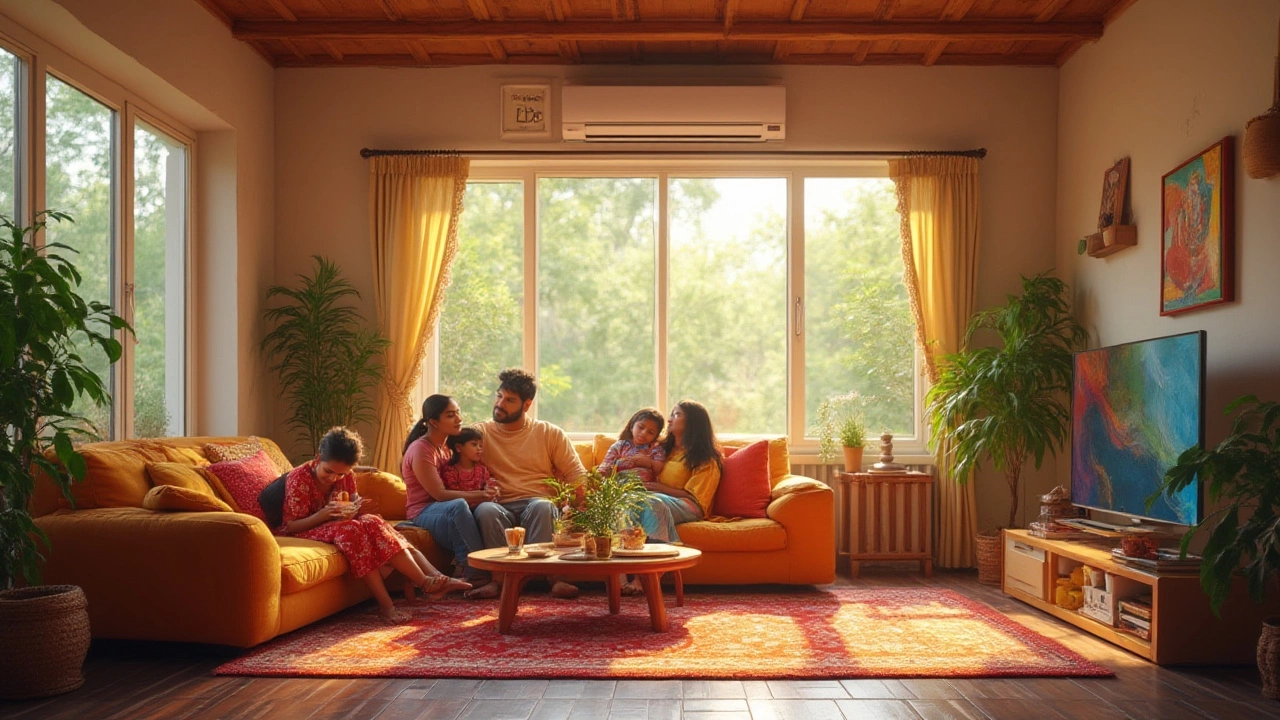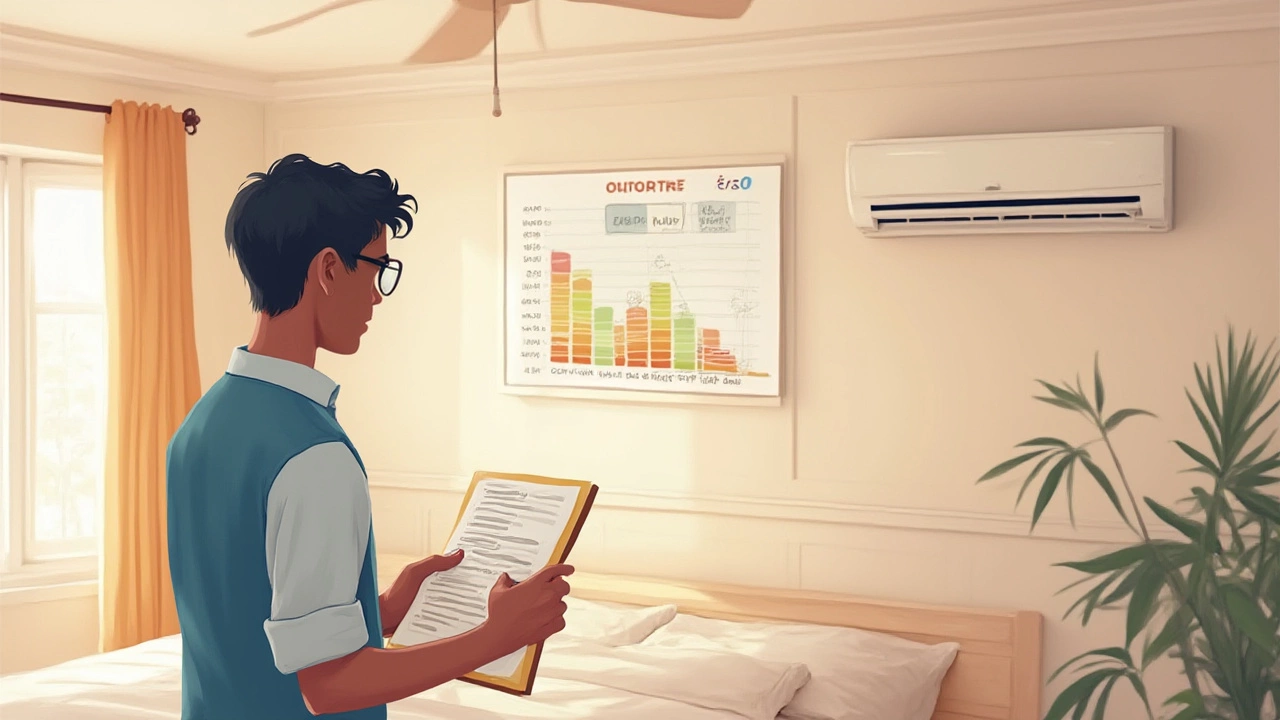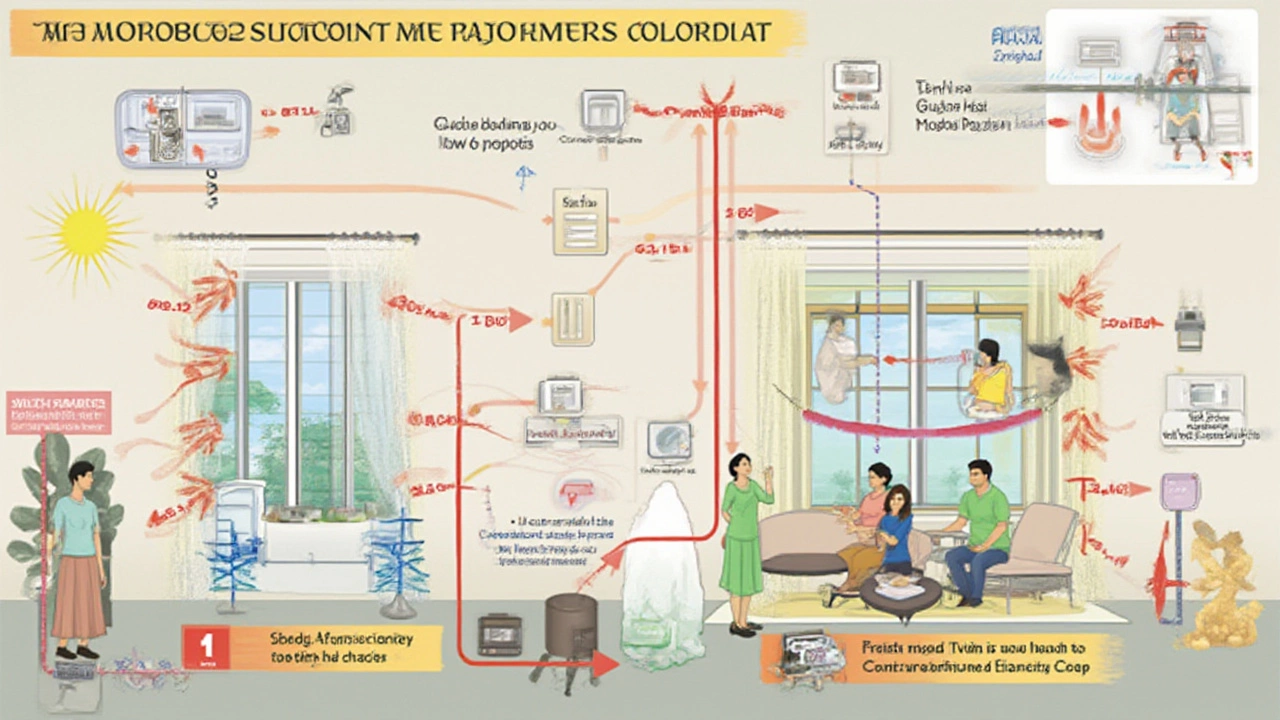
Ever wonder why your air conditioner just can't keep up on those blazing summer days? It's not always the AC's fault. A lot of people are chilling or sweating in their living rooms simply because they’ve picked the wrong-sized unit. Knowing exactly how many BTU you need for a 20x20 room saves you money, frustration, and that constant scramble for the perfect temperature. Let’s break down why the right number matters—and how you can get it exactly right.
What is BTU and Why Does It Matter for Room Cooling?
Start with this: BTU stands for British Thermal Unit. One BTU equals the amount of heat required to raise the temperature of one pound of water by one degree Fahrenheit. In air conditioning, BTU measures how much heat your AC can remove from a room every hour. Go too low, and your AC runs nonstop but never gets the job done. Go too high, and you get a room that cools fast but feels damp and clammy, along with higher energy bills.
The U.S. Department of Energy breaks it down like this: the average rule of thumb is about 20 BTUs per square foot. That means, with a 20x20 room (which is 400 square feet), you should target around 8,000 BTU. But before you sprint out to buy that perfect 8,000 BTU unit, hold on. Not all rooms—or the ways you use them—are created equal. Sunlight, ceiling height, windows, people, and what’s running inside all tweak that number. That’s why so many people get stuck with units that never quite deliver.
According to Energy Star (and let’s face it, those folks are obsessed with efficiency), undersized units strain to cool, spike your energy bills, and wear out early. Oversized units chill the air but leave humidity lurking, which is why you sometimes still sweat even when it feels arctic. So, BTU isn’t just a random techy term—it’s the key to comfort.
Calculating the Right BTU for a 20x20 Room: More Than Just Numbers
Alright, you’ve got a 20x20 room. That’s 400 square feet. If you stick to the standard calculation of 20 BTU per foot, you get 8,000 BTU. But are you done? Not quite. Real life does not happen in a vacuum. If your room is grabbing all the afternoon sun through a bank of west-facing windows, or if it’s crammed with friends viewing the big game, you’re making your AC work overtime.
- Sunny Room? Add 10%
- Lots of Shade? Knock Off 10%
- More Than Two People Hanging Out Constantly? Add 600 BTU Per Person
- Is it a Kitchen? Add 4,000 BTUs instantly due to all that appliance heat
- Ceilings Higher Than 8 Feet? You’ll need more cooling power
So, let’s say your 20x20 room is a living room with two people, plenty of west-facing glass, and 9-foot ceilings. The base is 8,000 BTU. Add 10% for the sun = 8,800. Two people are the standard, so you’re good. If it’s most often just you and nobody bakes in there, stick to the sunshine-adjusted number. If it’s your kitchen or regularly packed with guests, adjust further. Don’t forget to look at insulation and drafty old windows. Rooms that leak air need more BTU support.
Check out this snapshot:
| Factor | Adjustment |
|---|---|
| Room Size | 400 sq ft (Base 8,000 BTU) |
| Sunny Exposure | Add 10% (8,800 BTU) |
| Shade | Subtract 10% (7,200 BTU) |
| Additional Occupants | Add 600 BTU per person above 2 |
| Kitchen Use | Add 4,000 BTU |
| High Ceilings | Add ~10% per foot over 8' |
Run through these steps and customize your final number. It’s like picking out jeans—you want the fit that’s just right.

Tips for Getting the Best Efficiency From Your AC Unit
You’ve figured out your number. But squeezing sweat-free comfort from your AC takes more than stats. Here’s where smart choices and tiny habits help:
- Location matters: Place your AC near the center of the wall, not tucked in a far corner. That way, cool air spreads out faster.
- Use insulated curtains or blinds to block sun in the hottest part of the day. Less heat equals less work for your unit.
- Seal leaks around windows and doors. Would you leave your fridge door open while it’s running? Probably not—the same logic applies here.
- Keep filters clean. Dirty filters slow air, stress the system, and raise bills.
- Don’t set the temperature way lower and hope to cool down faster. Your AC only cools at a certain rate. Set it and let it work efficiently.
- Run ceiling fans to circulate cool air. They don’t cool the room by themselves, but they help you feel cooler at higher temperatures, which means you can nudge the thermostat up a notch and save cash.
- Check the EER (Energy Efficiency Ratio) on your next AC. Higher EER means cheaper operation.
- If you’re going portable, avoid venting hot air into another room. Feed it outside, or you’ll just play AC ping-pong.
The little adjustments make a big difference, both in comfort and on your wallet.
Surprising Factors That Mess With Your Room's Cooling Needs
BTU calculators are handy, but they never ask if your bedroom is above the garage or if your living room has cathedral ceilings. So here’s the wild card section nobody tells you about:
- If your room is over a non-insulated garage, you’ll lose a ton of cool air to the oven underneath.
- Open floor plans let cool air sneak away. Don’t just measure the closed room—account for neighboring open spaces.
- Love plants? They boost humidity, which makes the AC work harder to pull water from the air—consider bumping up your BTU slightly.
- Old, wood-framed homes leak air like old sneakers. Expect to size higher than an airtight modern build.
- Lots of electronics or computers heat up a room fast.
- Regular guests make your space feel crowded and cranked up—more people mean more body heat.
Check how the temperature swings in your room. If the top of the room stays warm and the bottom gets icy, fans can help pull that heat down and balance things out. Any quirky factor—skylights, glass doors, attic access—increases the load and calls for adjustments. Keeping notes on what’s actually happening in your room during hot spells beats any one-size-fits-all internet advice.

FAQs and Quick Answers: Don't Get Caught in the Heat
Let’s zoom into the questions that pop up all the time:
- "Is 8,000 BTUs enough for a 20x20 bedroom?" Most of the time, yes—unless huge windows, bad insulation, or super high ceilings mess things up.
- "Can I use a bigger AC for faster cooling?" You can, but don’t. It cools air quickly but can’t pull enough humidity out. That leaves you cold and clammy. Feels awful after a while.
- "Do ceiling fans replace ACs?" Not really. Fans move air, making you feel cooler, but they don’t actually lower the temperature.
- "How often should I change my AC filter?" Once a month during heavy use—every few months otherwise. Clean filters mean your unit cools better and lasts longer.
- "What’s the most energy-efficient setting?" Set your thermostat around 78°F when you’re home, and bump it higher when you leave. Every degree lower raises your bill by about 3%–5%.
- "Are portable units as good as window units?" Not quite. They’re handy, but usually less energy-efficient and struggle with larger rooms.
Still on the fence or dealing with a room that never seems quite cool enough? Sometimes it’s worth having a pro run a load calculation, especially if your space has every quirky factor known to mankind. But for most folks, nailing the BTU, smart tweaks, and a little common sense win the day—not just for now, but every sweltering summer to come.